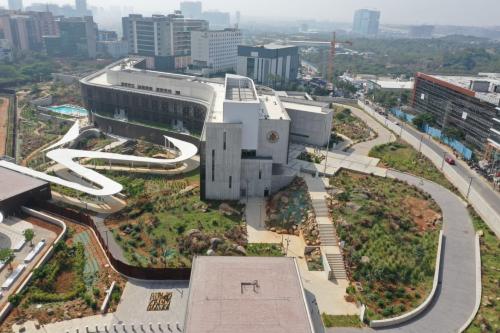Niranjan Shah, a civil engineer, who pioneered famous high-rise buildings in Baroda, is a broadcaster in India and the USA and a prolific writer. Under “A Letter from Grandpa.” he has been writing since 2002 on India’s historical, philosophical, and literary heritage. He can be reached at nshah32@hotmail.com
By Niranjan Shah
My dear Snehi and Sohan:
Janani janmabhoomischa swargadapi gariyasi (Mother and motherland are superior to heaven) is a saying from the great Indian epic Ramayana. Rama is said to have uttered this while addressing his younger brother, Lakshman, after their victory over the emperor of Rakshas, Ravan. The sloka reads as follows:
Api Swarnamayi Lankaa na me Lakshmana rochate
Janani Janmabhumishcha Swargaadapi Gariyasi
“Lakshmana, even this golden Lanka does not appeal to me; mother and motherland are greater than heaven.”
The Ramayana is world’s first Sanskrit epic. It is ascribed to the Vedic sage Valmiki and forms an important part of the Vedic canon (Smriti). The Ramayana is one of the two great epics of India, the other being the Mahabharata. The Ramayana depicts the duties and relationships, portraying ideal characters like the ideal servant, the ideal brother, the ideal wife and the ideal king. The name Ramayana is a tatpurusha compound of Rama and ayana (going or advancing), translating to “Rama’s Journey.” The Ramayana consists of 24,000 verses in seven books (kavyas) and 500 cantos (sargas), and tells the story of Rama, whose wife Sita is abducted by Ravan, the Rakshasa king of Lanka. Thematically, the epic explores the tenets of human existence and the concept of dharma. The verses in the Ramayana are written in a 32-syllable meter called anustup. The epic has an important influence on later Sanskrit poetry and Indian life and culture, particularly through its establishment of the shloka meter.
The epic is traditionally divided into seven kands or books, that deal chronologically with the major events in the life of Rama — Bala Kanda, Ayodhya Kanda, Aranya Kanda, Kishkinda Kanda, Sundara Kanda, Yuddha Kanda, and Uttara Kanda. The Bala Kanda describes the birth of Rama, his childhood and marriage to Sita. The Ayodhya Kanda describes the preparations for Rama’s coronation and his exile into the forest. The third part, Aranya Kanda, describes the forest life of Rama and the kidnapping of Sita by the Rakshas king Ravana. The fourth book, Kishkinda Kanda, describes the meeting of Hanuman with Rama, the destruction of the Vanar king Vali and the coronation of his younger brother Sugriva to the throne of the kingdom of Kishkindha. The fifth book is Sundara Kanda, which narrates the heroism of Hanuman, his flight to Lanka and meeting with Sita. The sixth book, Yuddha Kanda, describes the battle between Rama’s and Ravana’s armies. The last book, Uttara Kanda, describes the birth of Lava and Kusha to Sita, their coronation to the throne of Ayodhya, and Rama’s final departure from the world.
Taken from the Ramayana, the expression — Janani Janma-bhoomischa Swargadapi Gariyasi — is the national slogan of Nepal. It represents the national spirit of the Nepalese people.
— Grandpa’s blessing











